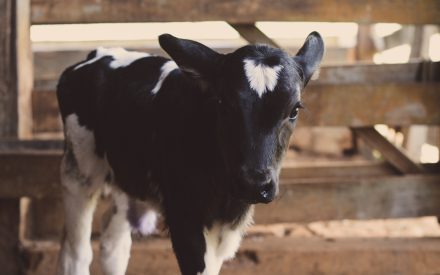Colostrum management is the single most important factor in determining calf health and survival. Successful colostrum management requires farmers and managers to provide newborn calves with a sufficient amount of clean, high-quality colostrum within the first few hours of life.
Colostrum quality
Colostrum quality is defined by the concentration of antibodies, or immunoglobulins (IgG), and varies from cow to cow. The concentration of antibodies in colostrum can be estimated by measuring density using a ColostrometerⓇ or Brix refractometer.
Reasons for disappointing colostrum quality results
If the reading of antibodies is lower than 22% on a Brix refractometer, the colostrum is of low quality and should not be used for the first feeding. University of Minnesota School of Veterinary Medicine’s Sandra Godden provides reasons for poor colostrum quality, which with management changes can be improved for future colostrum production:
- A reduced dry period. Large amounts of antibodies and other immune factors are selectively transferred from the bloodstream of the cows into the colostrum starting 5 weeks prior to calving and more so in the last 2 weeks before calving. Reducing the dry period to less than 45 days may jeopardize the amount of antibodies transferred into colostrum.
- Poor nutrition of the dam during the dry period. Formulate the energy levels of diets fed to dry cows at proper NRC recommendations. With a high energy diet, colostrum quality increased with higher energy supply of dams.
- Evidence suggests periods of heat stress can reduce the quality of colostrum, especially in heifers.
- Cows leaking colostrum or pre-milked prior to calving leads to onset of premature milk production and resembles more like normal milk than colostrum.
- Age of cow. First-calf heifers tend to produce less colostrum that is lower in quality than older, mature cows.
- Thin, watery colostrum.
- Dam’s colostrum production. Dams producing high volumes of colostrum, over 18 pounds, at their first milking will have lower antibodies concentrations than those who produce less. Concentrations of antibodies become diluted with higher production of colostrum.
- Delay in colostrum harvest from the dam. Antibody levels are the highest immediately after calving ang at first milking. Levels of antibodies drop quickly in subsequent milking as colostrum production transitions to milk.

 Navigating Low Colostrum Yields in Dairy Cows
Navigating Low Colostrum Yields in Dairy Cows ▶️ Watch: New Concepts in Colostrum Feeding for Dairy Calves
▶️ Watch: New Concepts in Colostrum Feeding for Dairy Calves Colostrum is critical after calving
Colostrum is critical after calving The overview of the digestive system of the calves
The overview of the digestive system of the calves


